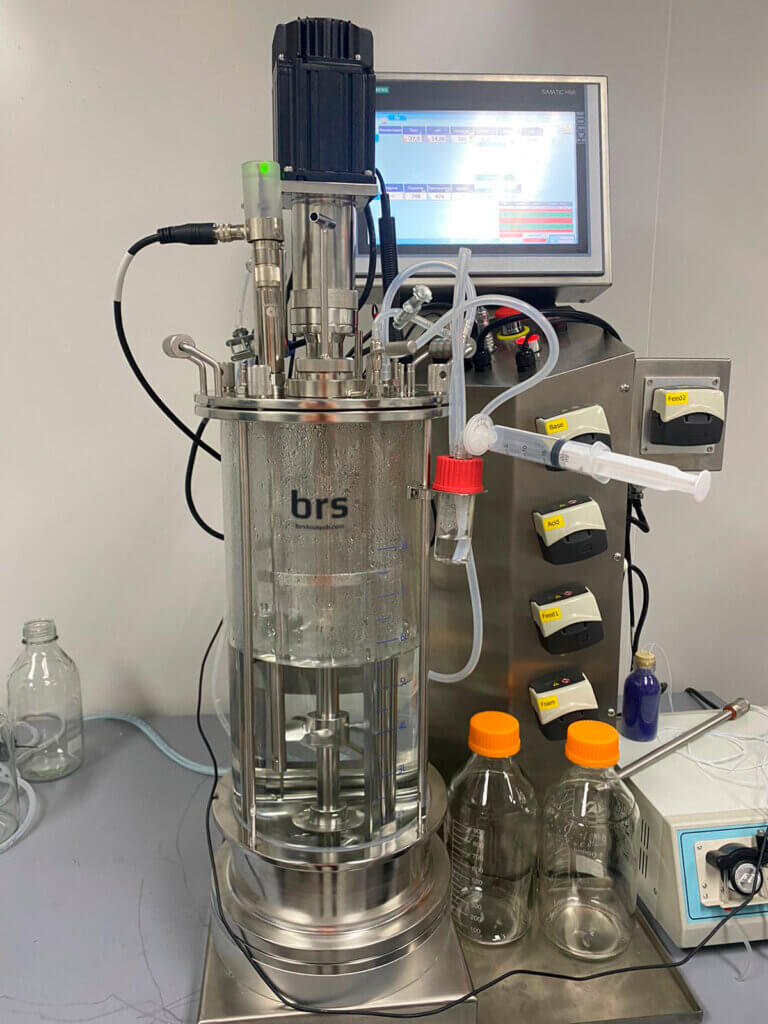We finished the installation of a laboratory bioreactor 10 L with an optical density sensor.
Some facts about measuring the concentration of optical density in a bioreactor:
Optical density measurement is one of the important methods for monitoring the growth of microorganisms in a laboratory bioreactor. Optical density is an indicator of the concentration of cells in a culture and can be used to determine the growth phases, evaluate productivity, monitor the stability of the culture and other parameters. Optical density is measured in units of absorption (Abs) or optical density (OD) and is related to the concentration of cells in culture. The greater the concentration of cells, the stronger the light absorption will be, and the higher the optical density value will be.
Traditionally, optical density is measured using a spectrophotometer, which measures the absorption of light by cells in a certain wavelength range. To carry out measurements, it is necessary to take a certain volume of culture liquid from the bioreactor and place it in the cell of the spectrophotometer. The spectrophotometer then emits light through the sample, and measures the amount of light that has passed through it. Measurement of optical density makes it possible to estimate the growth phases of microorganisms.
BRS Biotech offers autoclavable optical density sensors for laboratory fermenters, which measures the optical density value in the fermenter and outputs the value to the fermenter controller online. By displaying optical density values on the monitor, it is possible to monitor the growth of microorganisms in real time, as well as respond to changes in the growth process. Optical density measurement is an important control method in a laboratory fermenter, which allows you to learn about the state of the culture of microorganisms and take timely measures to optimize it.
At the initial phase of growth, the optical density will be low, since the concentration of cells is small. As the culture develops, the optical density will increase, reaching its maximum value in the stationary growth phase. Measuring the optical density also allows you to control the productivity of crops in the fermenter. For example, if the optical density becomes constant or begins to fall, this may indicate a deterioration in the quality of the culture or incorrect conditions for the growth of microorganisms. Optical density can also be used to monitor crop stability. The occurrence of anomalies in the optical density may be a sign of contamination or mutation of a population of microorganisms.













